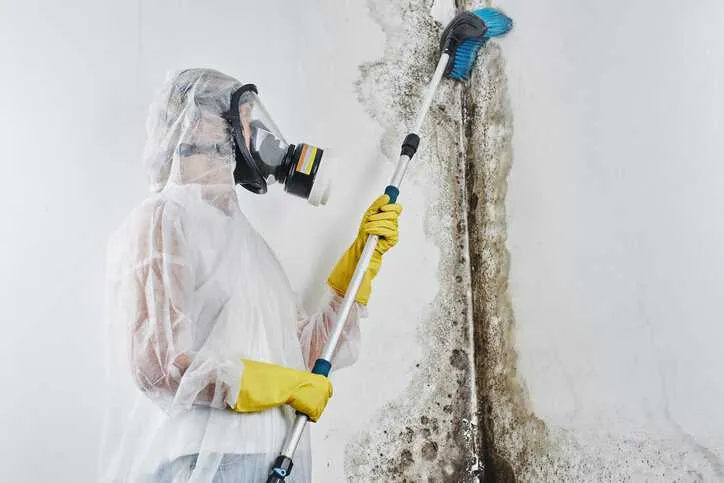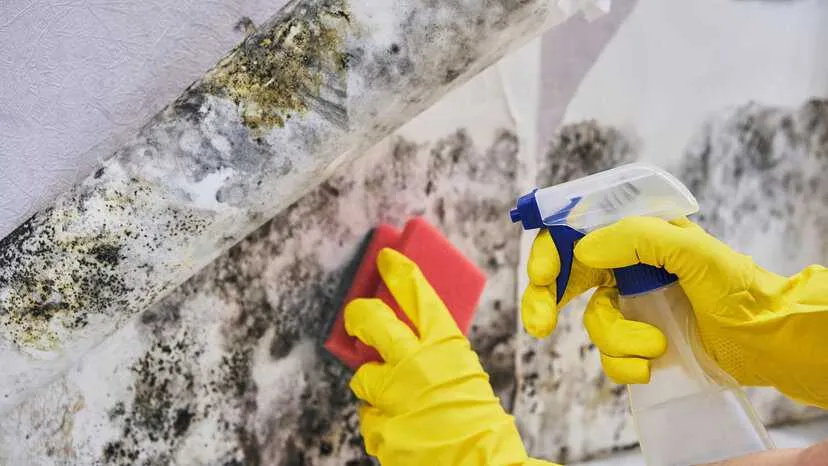ANSI/IICRC S520-2024: Professional Mold Remediation

Mold is everywhere, both inside and outside. These microscopic organisms play an important role in the breakdown of plant and animal matter. Although molds are generally not harmful to healthy humans, they can cause health problems when the spores start growing in moist areas of your home. ANSI/IICRC S520-2024: Standard for Professional Mold Remediation establishes mold contamination guidance, which can assist remediators and others in determining remediation response or confirm remediation success.
There Are Over 100,000 Known Species of Mold
Molds are part of the natural environment, so perhaps it is not surprising that there are over 100,000 known species of mold (only about 1,000 species of mold can be found in the United States)—most of which exist outside the home. Mold play an important role in nature by breaking down organic matter such as toppled trees, fallen leaves, and dead animals. Hence, not all types of molds can make you sick, and some are even used in medicine.
The mold species found in homes, however, can be harmful. Common mold types found in buildings are Cladosporium, Aspergillus, Penicillium, Stachybotrys, and Alternaria.
How Common Is Mold Remediation?
Mold remediation is a professional service that removes and cleans mold-contaminated areas to prevent mold from returning. This comprehensive process includes inspection, containment, removal, cleaning, treatment, and restoration. Since mold is a common fungus that can grow in many places, mold remediation occurs frequently. In fact, 47% of residential buildings in the United States have visible mold or mold odor, and 18% of school buildings and 26% of hospitals contain mold.
Mold remediation is vital because potential health effects and symptoms associated with mold exposures include allergic reactions, asthma, and other respiratory complaints. Unfortunately, there is no practical way to eliminate all mold and mold spores in the indoor environment, but if you do find mold in your home, do not fret as ANSI/IICRC S520-2024 lays out guidance for mold remediation.
What Is ANSI/IICRC S520?
ANSI/IICRC S520-2024 describes procedures and the precautions when performing mold remediation in residential, commercial, and institutional buildings. The American National Standard also specifies the systems and personal property contents of those structures. The Standard explains mold remediation techniques, the principles of which may apply to other microbial remediation projects or services.
ANSI/IICRC S520-2024 assumes that determining and correcting the underlying cause of mold contamination is the responsibility of a property owner, landlord, or their agent(s), and not the remediator, although a property owner may contract with a remediator or other professional to perform these services.

Changes in the 2024 Edition of ANSI/IICRC S520
This 4th Edition of the ANSI/IICRC S520 Standard hosts a variety of changes and improvements. Some of the more significant changes are summarized below:
- The identification that most mold remediation firms are not correctly insured and do not know it. More information is detailed in Section 6.1.1, “Recommended Contract Specifications.”
- Reworked, refined, enhanced, and technically expanded many of the definitions in Section A, “Scope, Purpose and Application,” including:
- Condition 1 (normal fungal ecology in an indoor environment), Condition 2 (an indoor environment including surfaces and air), and Condition 3 (actual mold growth in an indoor environment)
- Added the term “airborne” to the definition of Condition 2
- Added “mycotoxins” and “ECM” to Condition 2 definition
- Added “confirm with analytical methods” to Condition 2 definition.
- Identified the ability to remediate mycotoxins (and other components of Condition 2) by following this standard.
- Condition 1 (normal fungal ecology in an indoor environment), Condition 2 (an indoor environment including surfaces and air), and Condition 3 (actual mold growth in an indoor environment)
- Section 2, “Mold Cleaners, Antimicrobial Chemicals, and Coatings as Remediation Tools,” places more emphasis on discouraging remediators from spraying products on mold without first physically removing the mold and cleaning the surfaces.
- Section 9.1.7, “Ozone Gas and Other Antimicrobial Devices,” specifies that there should be less emphasis placed on biocide use.
- As noted in Section 2.1.1, “Chemicals (Antimicrobials, Stain Removers, Cleaning Products) – Limitations of Use,” the use of stain removers is cosmetic and can be used at the remediator’s discretion only after complete source removal.
- Improvements were made in the importance and use of proper communications between the parties including deviations from the Standard of Care (on page 2 under the header Disclaimer), such as (in Section 7.3.3, “Building Inspection”) remediators “assuming Condition 2,” and the IEP having a conflict of interest. All such deviations require written justification to Materially Interested Parties (MIPs).
- Section 9.3.12, “Post Remediation Evaluation (PRE),” details that remediators shouldimplement internal quality control procedures to confirm completion of the project. Hence, a firm clearance criterion for Post Remediation Evaluation (PRE) was established.
- Remediators may perform Post Remediation Evaluation (PRE) and IEPs may perform Post Remediation Verification (PRV), which is an inspection and assessment performed by an independent third-party IEP after a remediation project. PRV specifications are detailed in Section 9.3.13, “Post Remediation Verification (PRV).”
What Causes Mold?
Mold is usually caused by excess moisture or humidity. As such, mold may begin growing indoors when mold spores land on surfaces, such as drywall, wood, clothing, shoes, or laminate, that are wet. Some common sources of moisture that can lead to mold growth in include:
- Flooding of water intrusion from heavy rain or storms
- Water leaks from pipes, roofs, or windows
- High indoor humidity, especially in areas with poor ventilation
- Condensation on cold surfaces like windows and walls
- Outdoor drainage issues
- Poorly maintained or malfunctioning HVAC systems
- Wet or damp materials like carpets, upholstery, wood, foods, or clothes
- Inadequate ventilation (such as when wet clothes are drying inside)
- Insufficient or improper insulation in walls or ceilings.
- Building materials with high moisture content during construction
If the source of moisture is not promptly addressed, mold spores present in the indoor environment can settle and start to grow on surfaces, leading to mold infestations. To prevent mold growth, it is essential to control moisture levels, keep humidity low, and promptly address any water issues in an indoor space.
ANSI/IICRC S520-2024: Standard for Professional Mold Remediation is available on the ANSI Webstore as well as in the following Standards Packages: ANSI/IICRC S500 / ANSI/IICRC S520 – Water Damage and Mold Remediation Set and ANSI/IICRC S500 / ANSI/IICRC S520 / IICRC R520 – Water Damage and Mold Remediation Package.






